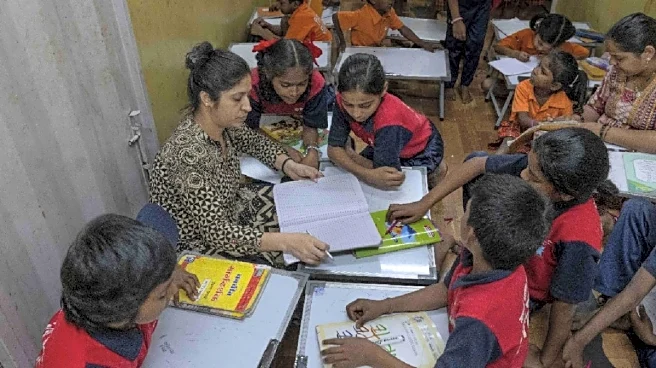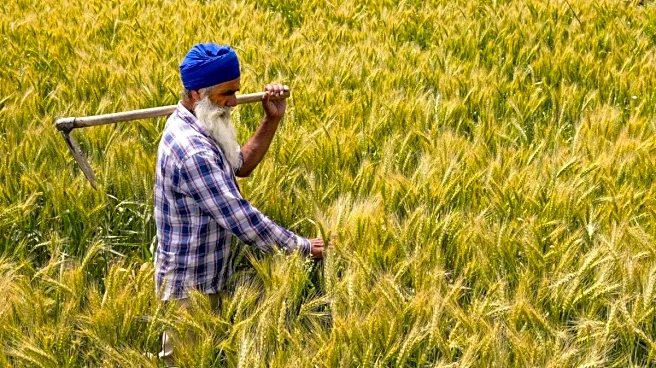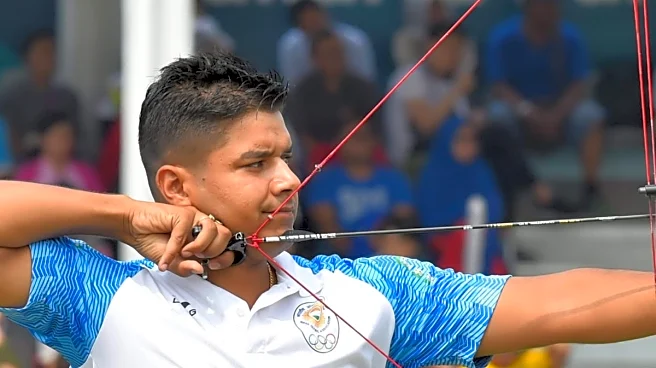What if a single policy intervention could simultaneously improve children’s education, expand women’s workforce participation, reduce deadly diseases, and lift millions out of poverty? India’s Modi government
has effectively done exactly that through a comprehensive approach to rural infrastructure that treats housing, water, sanitation, electricity, and clean cooking fuel as interconnected elements of human dignity. Roti. Kapda. Makaan
The model represents a departure from how most countries approach poverty reduction. Instead of fragmenting resources across competing priorities, India has recognised a simple truth: a house without water is merely shelter; shelter without electricity condemns children to studying by kerosene lamp; a latrine without dignity is merely a hole in the ground. When you combine these amenities, the results multiply and people claw back from the doom they were slowly edging towards.
The Architecture of Transformation
Since 2014, 2.82 crore rural houses have been completed under the Pradhan Mantri Awas Yojana. More than 15.44 crore rural households now have tap water connections, up from just 17% a decade ago. Over 11 crore toilets have been constructed. Nearly 3 crore households were electrified under the Saubhagya scheme. And 10.33 crore LPG connections have been distributed.
These might look like scattered statistics, but they are interconnected. When a family receives a house under PMAY-Gramin, government guidelines mandate that it include a toilet constructed with Rs 12,000 from the Swachh Bharat Mission. The household becomes eligible for electrification if unconnected. If eligible, it can access an LPG connection through PM Ujjwala. Water supply is prioritised through the Jal Jeevan Mission. The house becomes a node in a network rather than an isolated structure. Each beneficiary receives 90 to 95 person-days of wage employment through MGNREGA; all in all, it has become a development model that pays people to participate in their own transformation.
Women Reclaiming Their Lives
Imagine spending two hours every morning fetching water from a well kilometres away in the darkness. It was the staggering reality for hundreds of millions of Indian women until recently.
The Jal Jeevan Mission launched in August 2019 with a mind-bending deficit: only 17% of rural households had tap water connections. By February 2025, nearly 80% do. Nine crore women no longer fetch water from outside. The mission trained 24.80 lakh women, predominantly rural women, to test water quality using Field Testing Kits, creating skilled employment in their own communities.
This free time translates into economic participation. Research demonstrates a 7.4 percentage point increase in women’s engagement in productive activities, such as agriculture, allied trades, and income generation, following the rollout of the mission. Women cooking on LPG spend, on average, 49 minutes less on fuel collection and preparation daily. That is 300 minutes weekly available for income generation, education, or a well-needed rest.
Female labour force participation rose in almost every state between 2017–18 and 2022–23, with rural women experiencing greater gains than their urban counterparts. When you give women control over their time, they use it to generate income, pursue education, and participate in community governance, and the government mandates it as 50% of village water and sanitation committee members must be women under Jal Jeevan Mission guidelines.
The Mortality Math
Development is ultimately about reducing preventable death. The Swachh Bharat Mission’s expansion of sanitation contributed directly to India’s declining infant mortality rates. Districts achieving 30%+ toilet coverage showed 5.3-point lower infant mortality compared to lower-coverage areas. With over 11 crore toilets constructed, the health impact is substantial.
Waterborne diseases have declined as water coverage has expanded. The Jal Jeevan Mission’s delivery of 15.44 crore tap water connections has interrupted faecal-oral transmission pathways that have killed thousands of children annually for years.
In addition, the transition from biomass to LPG addresses one of India’s most severe health burdens: household air pollution. Between 5 and 10 lakh deaths annually were attributable to indoor smoke before the Ujjwala scheme’s rollout.
Research from rural Maharashtra measured the difference LPG makes with remarkable clarity. Women using LPG had systolic blood pressure averaging 119.5 mmHg compared to 125.3 mmHg for biomass users. The prevalence of hypertension among LPG users was at 21.1% versus 29.5% for biomass users. Lung function was significantly superior among clean fuel users. National modelling suggests exclusive LPG adoption could avert over 150,000 deaths annually.
Children’s Futures Rewired
The Saubhagya scheme delivered 2.86 crore household electricity connections by March 2022. Children’s study time during dark hours has increased by approximately 30 minutes daily. Compound this across a school year, and a student gains 150 additional study hours annually. Across a 12-year education trajectory, that is 1,800 extra hours, equivalent to 225 full school days.
But electrification’s impact extends beyond households. Schools with reliable electricity operate computer labs, maintain water systems for drinking and sanitation, and use teaching aids. Parents feel secure sending daughters to schools with modern facilities and proper lighting. School-going girls gain educational opportunities simply unavailable to previous generations.
The Dignity Dimension
For centuries, India’s rural poor, particularly women, have endured daily indignities arising from inadequate basic amenities. Women walking in pre-dawn darkness to defecate in fields. Girls suppressing their menstrual needs for hours rather than accessing toilet facilities. Families cooking in smoke-filled kitchens that blackened walls, clothes, and lungs.
Research has revealed that 70% of documented sexual assaults occurred when women left their houses to defecate in open spaces. Toilets constructed under Swachh Bharat eliminated this vulnerability. Women no longer faced the daily humiliation of open defecation despite living in the world’s largest democracy.
Women who have access to household toilets report feeling safer, more respected, and more confident. The ability to manage menstrual hygiene privately, to bathe in privacy, represents a fundamental expansion of human freedom. Clean cooking fuel similarly addresses dignity. Kitchens have become cleaner spaces, and families no longer bear visible markers of fuel poverty.
Electricity has transformed evening routines, enabling families to gather in well-lit spaces and focus their energies on productivity or rest. Villages achieving 100% coverage under various schemes experience collective pride and heightened civic consciousness.
The Road Ahead
No development story lacks challenges. Infrastructure sustainability requires ongoing maintenance, community ownership, and behavioural reinforcement. Sustainability of water sources amid climate change poses long-term challenges. The quality of construction requires rigorous monitoring.
Yet the achievements demonstrate what is possible at scale. The convergence model has proven its effectiveness across hundreds of millions of beneficiaries. As the government extends PMAY-G with an additional 2 crore houses by 2029, integrating these dwellings with comprehensive amenities will further expand the development’s reach.
The vision of Modi’s policies has provided homes that have become gateways to modern living, economic opportunity, and human dignity, and has moved housing from aspiration to reality for hundreds of millions of Indians. For women who are no longer fetching water at dawn. For children studying under electric lights. For families cooking on clean fuel and using hygienic toilets.
Completing this transformation for all Indians represents both a moral imperative and an economic necessity. A nation determined to eliminate poverty must ensure that every citizen has access to the basic infrastructure enabling a dignified, productive life.






/images/ppid_59c68470-image-176363753838397910.webp)






